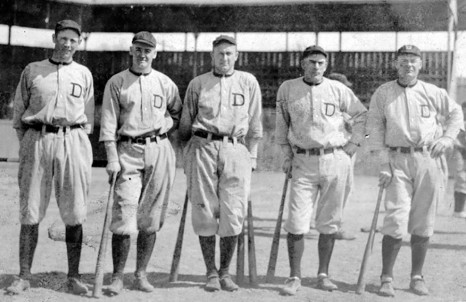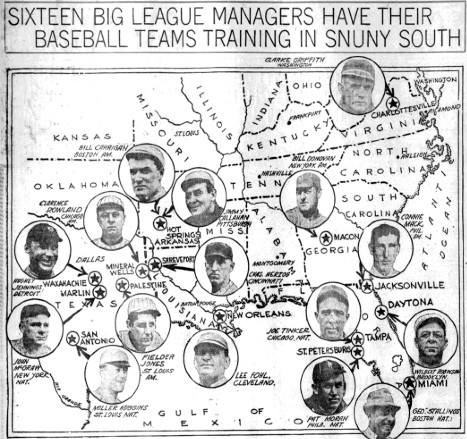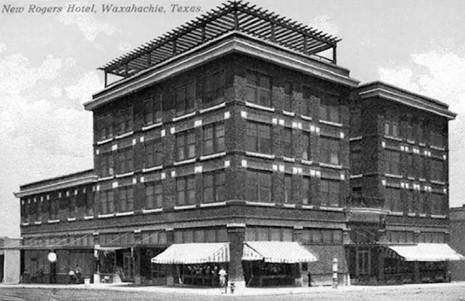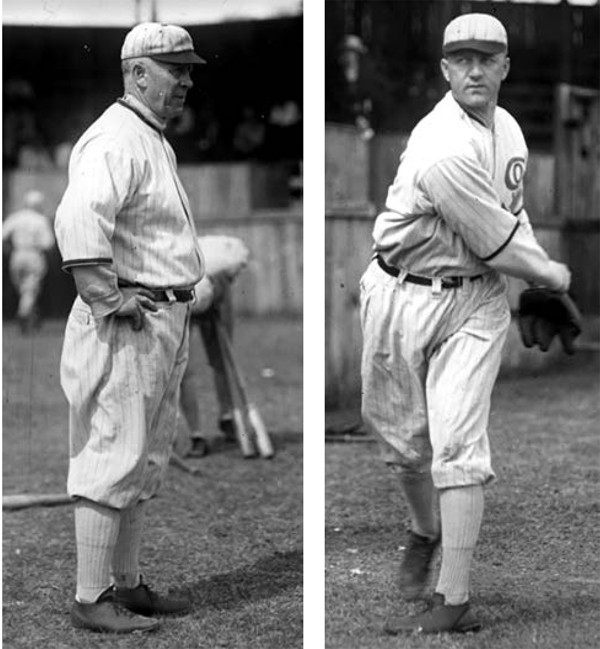Deadball Era Major League Baseball Comes to Waxahachie, Texas
This article was written by Jim Chapman
This article was published in The National Pastime: Baseball in Texas and Beyond (2025)
From left, Harry Heilmann (HOF), George Burns (1926 AL MVP), Ty Cobb (HOF), Bobby Veach, and Sam Crawford (HOF) in front of the grandstand at Jungle Park, Waxahachie in March 1917. The ballpark site is still used by the local high school baseball team. (Courtesy of the Chapman Deadball Collection)
The Detroit Tigers, featuring the legendary Ty Cobb, trained there from 1916 through 1918. The following year, the Cincinnati Reds encamped there before embarking on their 1919 campaign—the one that culminated in a World Series triumph over the infamous “Black Sox.” Ironically, after a year off from hosting spring training, in 1921 Waxahachie switched from the Reds to hosting the Sox. The six-year stretch from 1916 through 1921 was a memorable period for Waxahachie, and today the principal sites utilized by the visiting major league teams still stand as iconic structures serving the community.
Texas hosted spring training for many major league teams from 1903 to 1941.1 The relatively warm weather in March and the ready availability of rail travel were enticing to teams from colder climates. The peak years for spring training in Texas were 1904 through 1922. Thereafter, San Antonio was the only Texas city regularly utilized for spring training. From the 1920s on, the expansion of the railroad and the resulting development boom in Florida lured an increasing number of major league teams—still largely East-Coast-based—to the sunnier Florida climate, which could be reached by rail even more easily than Texas. The newspaper chart at right shows the locations of the major league spring training camps in 1916 when spring training at Texas was at its peak. Texas and Florida each hosted five teams, with the rest scattered across the southern states of Louisiana, Virginia, Georgia, and Arkansas.
In the first two decades of the 1900s, many Texas communities made pitches directly to major league teams to lure them to their towns for spring training. The competition to bring a big-league squad to town for a month or more fueled intense courting. Waxahachie, a small town located 25 miles south of Dallas, was one of the most successful suitors, ultimately enticing three different major league teams to town for a total of five training camps during the period.
Los Angeles Express, March 10, 1916. (Author’s collection)
Intrepid Waxahachie community leaders astutely took advantage of the surge of interest in Texas spring training sites by major league teams in the 1910s. Waxahachie’s flirtation with the big leagues began in earnest in 1915 when representatives of the Waxahachie Chamber of Commerce reached out with a lucrative offer to the Detroit Tigers ownership about the possibility of hosting the team for spring training.2 Texas intrigued the Tigers, and they also had offers from several other Texas communities. During the 1915 offseason, the Tigers dispatched their manager, Hall of Famer Hughie Jennings, and their groundskeeper to Texas to tour the vying towns in North Central Texas.3 They were duly impressed with Waxahachie, which was ultimately the Tigers’ choice. Several reasons, aside from just the warm weather and expansive transit network, lured them to Waxahachie.
The Rogers Hotel as it appeared when the Detroit Tigers stayed there in 1916-18. (Author’s collection)
Foremost was the luxurious Rogers Hotel, which had been completed several years prior in 1912 and was an ideal base for the team. The Rogers was a much nicer and more modern hotel than most communities of Waxahachie’s size could boast, and was located next to a popular natural hot spring. In January 1916, to further entice the Tigers, a 20-square-foot, three- to five-foot-deep pool was installed in the hotel basement with water pumped in from the adjacent hot spring.4 The basement also was modified to include a locker room with 33 lockers and billiard tables for the players. There was even a rooftop garden, visible on the postcard shown at left, available for the player’s relaxation.
A newly constructed ballpark where the Tigers could train was also a key factor in their selection of Waxahachie. The Waxahachie Chamber of Commerce formed and capitalized a stock company, the Waxahachie Athletic Park Association, which in turn agreed to construct a stadium at a cost of $4,000, on vacant land across from the city cemetery.5 The players could walk the three-quarter-mile trip to the stadium alongside the railroad tracks. The stadium was christened “Jungle Park” in honor of the new occupants, the Tigers. A covered grandstand was hastily constructed, and the entire field was enclosed within a wooden fence. A stadium is still located at this site, now known as Richards Park in honor of Waxahachie native Paul Richards, a former major league player and manager, and is the home of the Indians, the Waxahachie High School baseball team.
There was another major benefit of Waxahachie as far as the team owners, if not necessarily the players, were concerned. Waxahachie and its surroundings were “dry,” meaning alcohol would not be a temptation for the players. Combined with the easy rail access to nearby training sites for other major league teams in Marlin Springs (New York Giants), Palestine (St. Louis Browns), and Mineral Wells (Chicago White Sox), Waxahachie’s appeal becomes evident. A full-page article from the 1916 Detroit Free Press (click here to view the full image) extolls Waxahachie’s virtues and compares it—in puffery the locals would be loath to believe—to New York and Paris.6
Waxahachie, in turn, was enamored with the major leaguers and their sojourn in town. Locals feted the players with numerous parties and banquets. Overflow crowds watched workouts and games against visiting teams such as the New York Giants. Many famous Hall of Fame players came to Waxahachie during those years. The 1916-18 Tigers teams that trained in Waxahachie were loaded with future Hall of Famers such as Ty Cobb, Sam Crawford, Harry Heilmann, and Hughie Jennings. The 1919 Reds fielded Hall of Famer Edd Roush. The 1921 White Sox team was also loaded with Hall of Famers such as Eddie Collins, Harry Hooper, Ray Schalk, and Red Faber. Other Hall of Famers who passed through Waxahachie during those years included Tris Speaker, Rogers Hornsby, and Christy Mathewson.
White Sox manager “Kid” Gleason (left), and Hall of Fame pitcher “Red” Faber (right) in front of the Jungle Park grandstand, 1921. (Courtesy of the Chapman Deadball Collection)
After the 1918 season, the Tigers opted to move to Macon, Georgia, for spring training as flooding had heavily damaged the wooden Jungle Park.7 After being spurned by the Tigers, local leaders quickly put the ballpark back in shape and enticed the Cincinnati Reds to switch to Waxahachie as their spring training site for 1919. But despite winning the World Series that year, the Reds opted for Miami, Florida, the following year, bypassing Waxahachie altogether. Texas papers suggested the move was made for a big pile of money and the preference for a locale where, even with the oncoming of Prohibition, booze and fast living thrived.8 The Reds switched late enough in the year that Waxahachie was not able to attract another team in time for spring training in 1920. The White Sox trained in Waxahachie prior to the 1921 season and were the final major league team to do so.
By 1922, wooden Jungle Park was falling into disrepair once again and the White Sox opted to train in Seguin.9 While minor league teams such as the Kansas City Blues trained in Waxahachie in the 1920s, the big-league squads never returned.
For a brief but glorious while over one hundred years ago, Waxahachie was a hotbed of major league baseball. It was quite an accomplishment for such a small city to host spring training for the major league teams. The memory of the baseball stars that passed through town has dimmed with the passage of time, but the structures that accommodated them are still part of the citizens’ daily lives. When you visit the Globe Life Field environs in Arlington this year for SABR 53, remember, there was a time a little more than a century ago when the newest big-league ballpark was in Waxahachie, Texas.
JIM CHAPMAN is a Waxahachie native, Judge of the Ellis County Court at Law No. 1, and the winner of SABR’s 2024 Larry Ritter Book Award for Baseball Photography of the Deadball Era.
Appendix 1
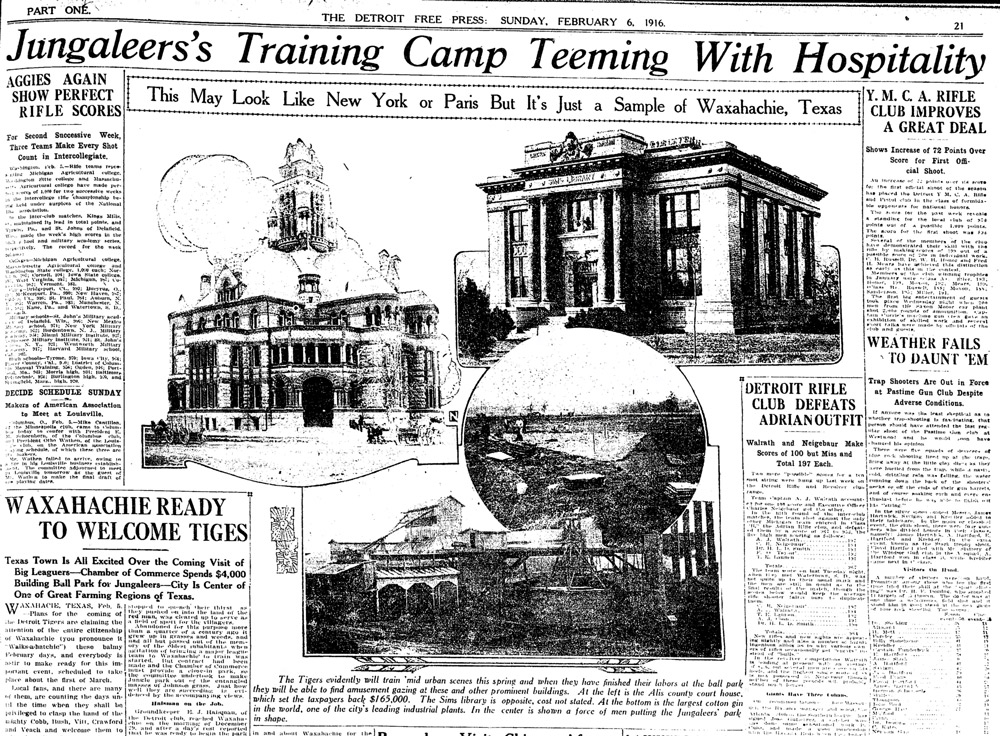
Detroit Free Press, February 6, 1916. Click here to view the full image.
Notes
1. Frank Jackson, “Crossing Red River, Spring Training in Texas,” The National Pastime, No. 26 (SABR, 2006), 85-91.
2. “Notes,” Waxahachie Daily Light, August 26, 1915.
3. “Waxahachie Looks Good to Jennings,” Waxahachie Daily Light, November 15, 1915.
4. “New Camp is a Great One, Best Equipped Park,” Waxahachie Daily Light, March 11, 1916.
5. “Stock Company Will Provide a Ball Park,” Waxahachie Daily Light, December 4, 1915.
6. “Jungaleers’s Training Camp Teeming with Hospitality,” Detroit Free Press, February 6, 1916.
7. “Pallid Hose Will Train for Coming Pennant in Texas,” Moline Daily Dispatch, December 8, 1919.
8. Molten Cobb, “The Stove League,” Austin American-Statesman, December 7, 1919.
9. “Fans Favor the Texas Camping,” The Brookfield Argus and Linn County Farmer, December 27, 1921.
